Step into the Barbican Conservatory, a captivating realm of botanical wonders nestled within the bustling metropolis of London. This architectural marvel is a testament to the harmony between nature and urban design, inviting visitors to immerse themselves in a verdant oasis where exotic flora flourishes.
Within its glass walls, a diverse collection of plants awaits, showcasing the remarkable diversity of the natural world. From towering palms to delicate orchids, each specimen tells a tale of adaptation and resilience, while the conservatory’s commitment to conservation and sustainability inspires awe and wonder.
Barbican Conservatory Overview
Nestled within the iconic Barbican Estate in the heart of London, the Barbican Conservatory stands as a verdant oasis, offering a captivating horticultural experience. Established in 1984, this architectural marvel is a testament to the innovative spirit of the Brutalist era and a haven for plant enthusiasts.
Spanning two levels, the conservatory boasts a unique polygonal design, its geometric facade echoing the surrounding Barbican architecture. Inside, visitors are greeted by a symphony of exotic and temperate plants from around the globe, creating a lush and diverse ecosystem under a soaring glass roof.
The Barbican Conservatory is a popular destination in London, known for its diverse collection of tropical plants. For a change of scenery, consider exploring the tranquil shores of Anna Maria Island, Florida. With its white-sand beaches and laid-back atmosphere, it offers a perfect escape from the hustle and bustle of city life.
Upon your return, be sure to revisit the Barbican Conservatory, where you can marvel at the beauty of its exotic flora.
Architectural Significance
The Barbican Conservatory is renowned for its groundbreaking architectural design. The geometric framework, constructed from steel and glass, creates a striking contrast against the surrounding concrete structures. The conservatory’s polygonal shape maximizes natural light penetration, allowing plants to thrive in an environment that mimics their natural habitats.
The interior space is meticulously planned, with walkways winding through dense foliage and secluded alcoves offering intimate encounters with nature. The vertical arrangement of plants, from towering trees to delicate ferns, creates a layered effect that enhances the sense of immersion and discovery.
Horticultural Collection
The Barbican Conservatory houses a diverse collection of over 2,000 plant species, representing various climates and habitats. Visitors can explore lush tropical rainforests, arid deserts, and temperate woodlands, all within the confines of this urban sanctuary.
- Tropical Rainforest: A humid and verdant environment, home to towering palms, exotic orchids, and vibrant ferns.
- Arid Desert: A collection of drought-tolerant plants, including cacti, succulents, and desert wildflowers.
- Temperate Woodland: A tranquil space showcasing native British species, such as oak trees, bluebells, and primroses.
Educational and Cultural Impact
Beyond its horticultural significance, the Barbican Conservatory plays a vital role in education and community engagement. It hosts workshops, guided tours, and educational programs, fostering an appreciation for the natural world and inspiring future generations of plant enthusiasts.
The conservatory also serves as a cultural hub, hosting art exhibitions, music performances, and literary events, creating a vibrant and diverse space for the local community and visitors alike.
Plant Collection
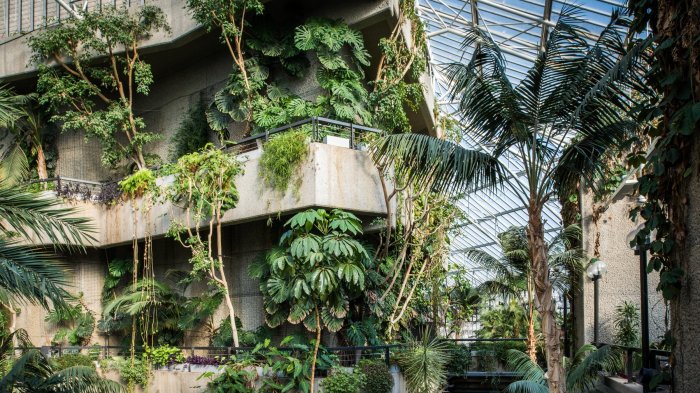
The Barbican Conservatory is renowned for its diverse collection of plants, boasting over 2,000 species from around the world. The conservatory is particularly focused on tropical plants, creating a lush and verdant environment.
Among the conservatory’s highlights are its collection of rare and exotic species, including the giant water lily (Victoria amazonica), the world’s largest aquatic plant, and the corpse flower (Amorphophallus titanum), known for its pungent odor.
Tropical Rainforest
The Barbican Conservatory’s tropical rainforest section is home to a wide variety of plants that thrive in warm, humid conditions. These include:
- Epiphytes, such as orchids and ferns, which grow on trees and other plants
- Lianas, or woody vines, which climb up trees to reach sunlight
- Trees, such as the kapok tree (Ceiba pentandra), which can grow to over 100 feet tall
Desert
The Barbican Conservatory’s desert section features plants that have adapted to survive in arid conditions. These include:
- Cacti, such as the saguaro cactus (Carnegiea gigantea), which can store water in its thick stems
- Succulents, such as the aloe vera plant (Aloe vera), which have thick, fleshy leaves that store water
- Shrubs, such as the creosote bush (Larrea tridentata), which can tolerate high levels of salinity
Conservation and Sustainability
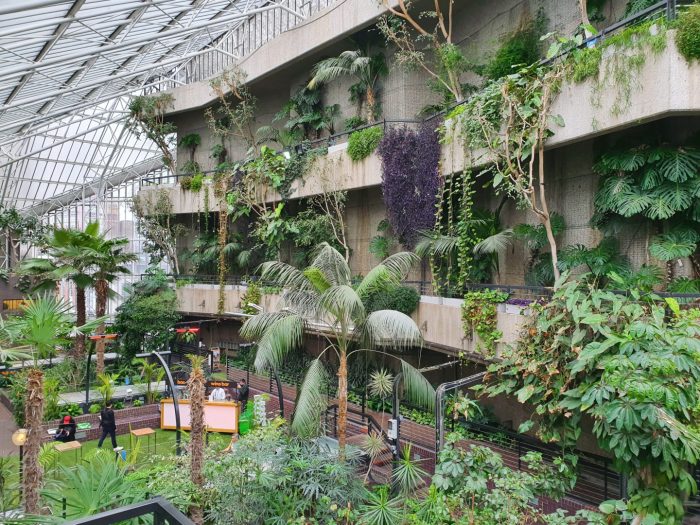
The Barbican Conservatory is dedicated to preserving the natural world and promoting environmental awareness. It actively participates in conservation efforts to protect endangered plant species and educates visitors about the importance of biodiversity.
The conservatory has established partnerships with organizations such as the Royal Botanic Gardens, Kew, to support research and conservation projects worldwide. It also participates in seed banks and exchange programs to preserve rare and threatened plant species.
Environmental Education
The conservatory hosts educational programs and workshops to raise awareness about conservation and sustainability. These programs engage visitors of all ages, teaching them about the importance of protecting plant life and the environment. The conservatory also collaborates with schools and universities to provide hands-on learning experiences for students.
Educational Programs and Events
The Barbican Conservatory offers a diverse range of educational programs and events designed to engage visitors of all ages and foster an appreciation for botany. These programs provide an immersive and interactive learning experience, allowing participants to explore the wonders of the plant kingdom.
Guided Tours
Guided tours are led by knowledgeable staff who share insights into the conservatory’s unique collection of plants, their origins, and their ecological significance. Visitors can learn about the different plant families, their adaptations, and their roles in the ecosystem.
Workshops and Classes, Barbican conservatory
The conservatory offers a variety of workshops and classes that delve deeper into specific aspects of botany. These include topics such as plant identification, plant propagation, and sustainable gardening. Participants can gain hands-on experience and develop practical skills in plant care and cultivation.
Family Activities
The conservatory also hosts family-friendly activities that make learning about plants fun and engaging for children. These activities may include interactive games, storytelling sessions, and craft workshops. Families can explore the conservatory together and discover the wonders of the plant world.
School Programs
The conservatory offers educational programs tailored to school groups. These programs align with curriculum requirements and provide students with an immersive learning experience. Students can learn about plant diversity, ecology, and conservation through hands-on activities and interactive discussions.
Design and Architecture
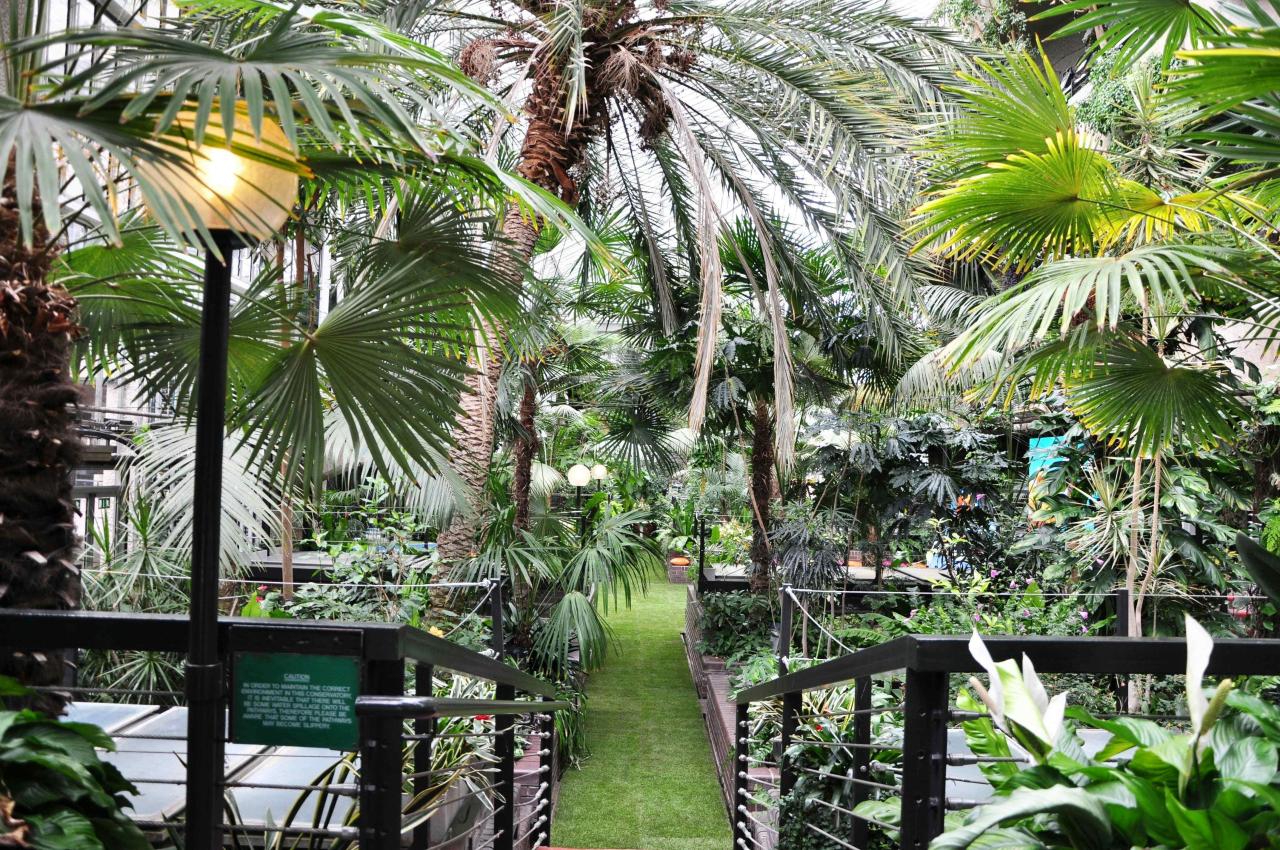
The Barbican Conservatory’s design is a remarkable fusion of functionality and aesthetic beauty. Its unique structure and choice of materials play a pivotal role in creating an optimal environment for the diverse plant life it houses, while also capturing the essence of the Brutalist architectural style that characterizes the Barbican complex.
The Barbican Conservatory, a lush oasis amidst the urban jungle, transports visitors to a tropical paradise. After immersing yourself in the conservatory’s vibrant greenery, venture to the iconic Apollo Theater , a legendary venue that has hosted countless musical luminaries.
From its Harlem roots to its current status as a global entertainment destination, the Apollo Theater embodies the spirit of artistic excellence. Returning to the Barbican Conservatory, marvel at the diverse plant life, including towering palms, exotic orchids, and fragrant jasmine.
The conservatory’s striking geometric form, with its angular lines and intersecting planes, is a testament to the Brutalist architectural movement that emerged in the post-World War II era. The use of concrete as the primary building material further emphasizes this aesthetic, creating a sense of solidity and permanence.
Structure
The conservatory’s structure is designed to maximize natural light and ventilation, essential elements for plant growth and well-being. The vast majority of its exterior walls are composed of floor-to-ceiling glass panels, allowing abundant sunlight to flood the interior. The panels are supported by a framework of steel beams, providing both structural integrity and a sleek, minimalist appearance.
Materials
Concrete plays a dominant role in the conservatory’s construction, contributing to its durability and thermal insulation. The use of concrete also allowed for the creation of complex geometric shapes, adding to the conservatory’s unique visual appeal. Additionally, the conservatory’s roof is constructed from a lightweight fabric material, which allows for the transmission of diffused natural light while minimizing heat gain.
Visitor Experience: Barbican Conservatory
Immerse yourself in the captivating Barbican Conservatory, where nature and architecture harmoniously intertwine. The ambiance is serene and inviting, providing a tranquil escape from the urban hustle. As you step inside, you’ll be greeted by a symphony of lush greenery, exotic blooms, and cascading water features.
Stroll along the winding paths, discovering hidden corners and admiring the diverse collection of plants from around the globe. Take advantage of the comfortable seating areas scattered throughout the conservatory, perfect for moments of contemplation or quiet conversation. Engage your senses as you inhale the heady fragrance of tropical blooms, listen to the gentle trickle of water, and marvel at the vibrant colors and intricate patterns of nature’s wonders.
Historical and Cultural Significance
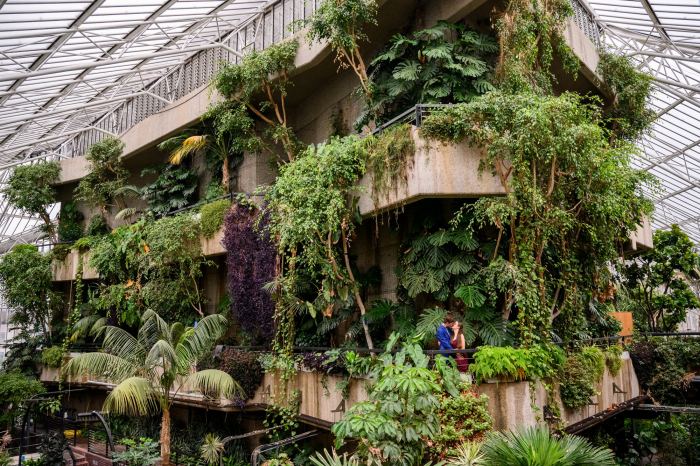
The Barbican Conservatory holds a significant place in the cultural and historical landscape of London. Its inception in the 1980s marked a pivotal moment in urban planning and community engagement.
The conservatory’s unique design and lush greenery transformed a derelict site into a vibrant oasis within the heart of the Barbican Estate. It became a symbol of urban renewal and the integration of nature into the built environment.
Community Engagement
The conservatory played a crucial role in fostering a sense of community within the Barbican Estate. Its public programs, workshops, and educational initiatives provided opportunities for residents to connect, learn, and appreciate the beauty of nature.
The conservatory’s presence created a shared space where people from diverse backgrounds could come together, fostering a sense of belonging and social cohesion.
Future Developments and Plans
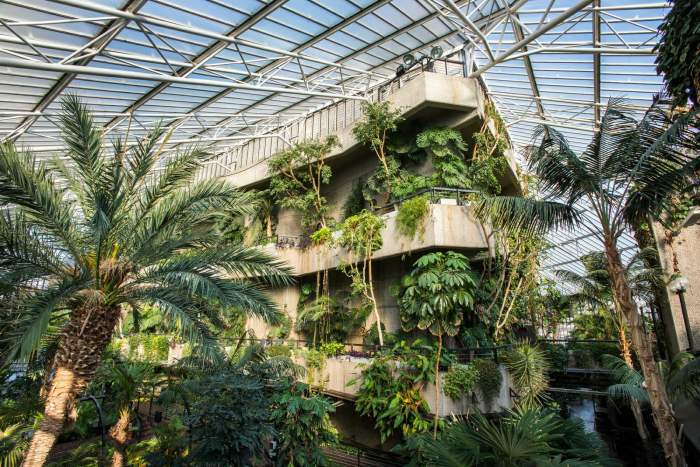
The Barbican Conservatory is committed to continuous improvement and expansion to enhance its offerings and impact on the community. Several exciting developments are in the pipeline, aiming to further its mission of showcasing diverse plant life, promoting conservation, and providing educational and cultural experiences.
The Barbican Conservatory, located in the heart of London, is a haven for nature lovers. Its diverse collection of plants and flowers offers a tranquil escape from the hustle and bustle of city life. The conservatory is also a great starting point for exploring the Atlanta Beltline , a 22-mile loop of multi-use trails and parks that encircles the city.
After a leisurely stroll along the Beltline, visitors can return to the Barbican Conservatory for a relaxing afternoon amidst the lush greenery.
Enhanced Educational Programs
- The conservatory plans to expand its educational programs to reach a broader audience, particularly young learners.
- Interactive workshops, guided tours tailored for children, and online resources will be developed to foster a love for nature and inspire future generations of plant enthusiasts.
Expanded Plant Collection
- The conservatory aims to acquire new and rare plant species to enrich its collection and provide visitors with a wider range of botanical wonders.
- This expansion will include species from diverse ecosystems, focusing on plants with unique adaptations, ecological importance, and horticultural significance.
Improved Accessibility and Inclusivity
- The conservatory is committed to making its facilities accessible to all visitors, regardless of their abilities.
- Plans include upgrades to ramps, tactile signage, and sensory-friendly exhibits to ensure an inclusive and welcoming experience for all.
Sustainability Initiatives
- The conservatory recognizes the importance of environmental sustainability and is implementing various initiatives to reduce its ecological footprint.
- This includes optimizing water usage, implementing energy-efficient lighting systems, and promoting sustainable gardening practices.
Outcome Summary
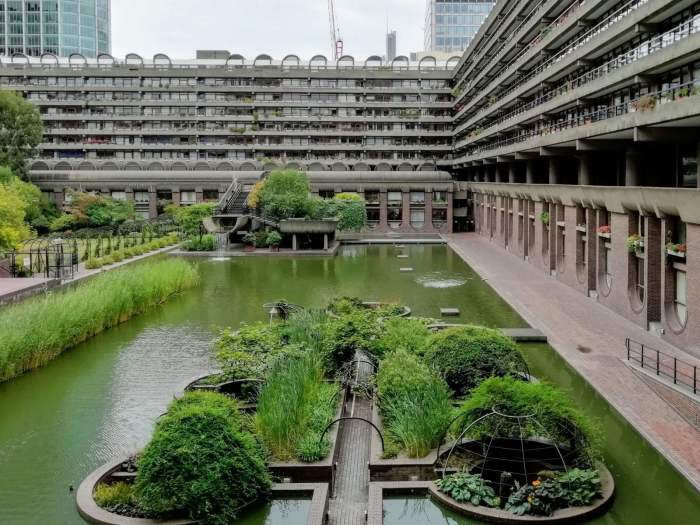
The Barbican Conservatory is not merely a collection of plants; it is a vibrant hub of knowledge, inspiration, and community engagement. Its educational programs foster a deep appreciation for botany, while its unique design and architectural significance make it an iconic landmark in London’s urban landscape.
Popular Questions
What is the Barbican Conservatory’s mission?
To showcase a diverse collection of plants, promote conservation and sustainability, and provide educational programs that foster an appreciation for botany.
What is the architectural significance of the Barbican Conservatory?
Its unique glasshouse structure and innovative use of materials create a light-filled and airy space that complements the surrounding urban environment.
What types of plants are featured in the Barbican Conservatory?
A wide variety of tropical plants from around the world, including rare and endangered species.